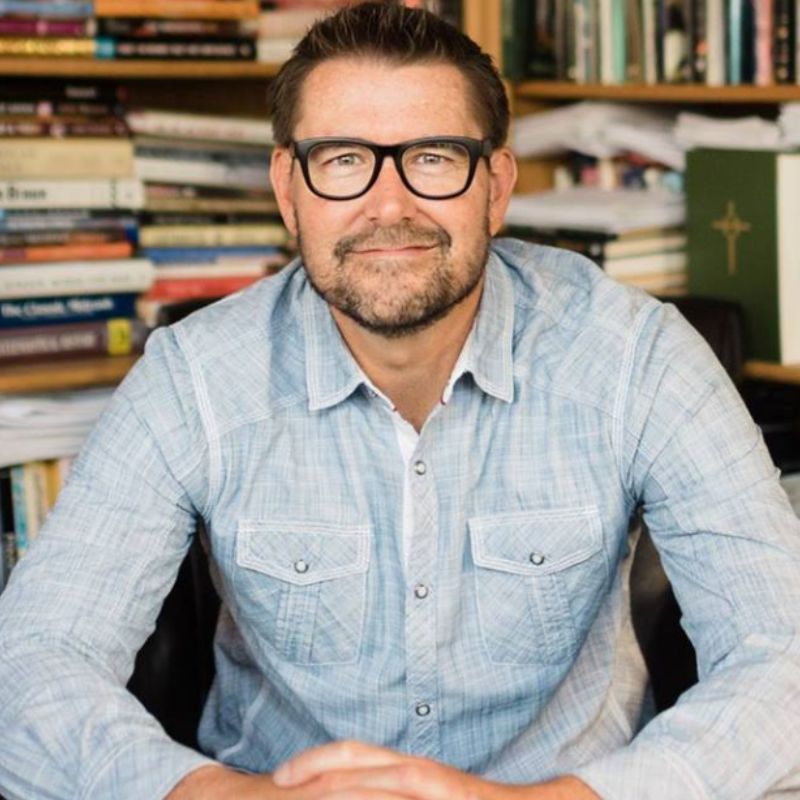I have four pictures that hang behind my desk in my office—my personal Mount Rushmore. All of the people pictured died long before I was born, but each of them has had a profound impact on my life. The first picture is Albert Einstein with his puppy-dog eyes, unkempt hair, and wrinkled forehead. Remember the 878-page biography on Einstein? Five words on page 755 changed the trajectory of my life: “Never lose a holy curiosity.” There was something about the juxtaposition of those two words—holy and curiosity—that captured my imagination. It’s almost like holy curiosity was conceived in my soul right then. My prayer is that this book would conceive that same holy curiosity in you! Curiosity about what? About everything! About everyone! About the million little miracles that are all around us all the time!
The second picture is the man, the myth, the legend—George Washington Carver. Few people embodied holy curiosity like Carver. Born a slave, Carver would become one of the greatest chemists and agronomists the world has ever known. His curriculum vitae includes three hundred uses for the peanut. His life verse was Job 12:8: “Speak to the earth, and it will teach you.” That’s precisely what Carver did during his daily prayer walks through the woods at four o’clock in the morning.
The third picture is Teddy Roosevelt riding a moose through a river. Who does that? The same guy who navigated uncharted portions of the Amazon, scaled the Matterhorn in the Alps, and flew in a Wright Brothers’ airplane. Part of my affinity for Roosevelt is the fact that he overcame a crippling case of asthma, as did I. Roosevelt’s love of books was legendary. He somehow managed to read five hundred books a year as a sitting president. I know that seems unbelievable, but remember, he wasn’t distracted by television screens, computer screens, and smartphone screens. Few people on the planet have possessed a holy curiosity on par with our twenty-sixth president.
The fourth and final picture is of John Muir standing atop Glacier Point in Yosemite National Park, the park that he and Roosevelt helped protect for posterity. Muir believed in baptism by water and baptism by fire, but he also believed in baptism by nature. His mission was “saving the American soul from total surrender to materialism.” Muir once charged a bear to study its running gait, which is almost as crazy as chasing a lion into a pit on a snowy day! Not only did he study sixty-five glaciers in the Alaska territory; he even sledded down several of them. But one moment stands above the rest in his résumé and serves as both a metaphor and a manifesto.
CLIMB THE TREE
In December 1874, John Muir was staying at a cabin nestled in the Sierra Nevada when a storm whipped through the valley. Instead of seeking shelter, Muir sought adventure. He located the tallest cluster of Douglas fir trees he could find, climbed one of those trees to the very top, and held on for dear life. “On such occasions, nature always has something rare to show us,” he said. “The danger to life and limb is hardly greater than one would experience crouching deprecatingly beneath a roof.”
Can you picture John Muir hugging a hundred-foot-tall tree as it swayed? It may seem like Muir was tempting death, but that’s how he came to life. He feasted his senses on the sights, sounds, and smells of earth, wind, and snow. Eugene Peterson referenced that moment as an icon of Christian spirituality. He called it “a standing rebuke against becoming a mere spectator to life, preferring creature comforts to Creator confrontations.”
Are you a mere spectator to life?
Do you prefer creature comforts to Creator confrontations? Are you settling for creation or seeking the Creator Himself?
This book is an exhortation to brave the storm and climb the tree. That’s where the miracles are hiding! Like most people, I appreciate the roof over my head. I appreciate air-conditioning, running water, indoor plumbing, high-speed internet, and hundreds of other luxuries that technology affords us. I prefer glamping to camping. I once hiked the Inca Trail to Machu Picchu, but I brought along an inflatable mattress. Did I feel less manly than the other guys in our group? Yes, I did. Did I regret it? Not for a single second of sleep!
I’m grateful for the comfort and convenience of modern life, but there is a hidden tax. When we lose touch with nature, we lose touch with nature’s God. Edison’s lightbulb is a gift to early birds and night owls, but it fundamentally altered the built-in rhythms of sunrise and sunset. Refrigeration allows us to enjoy exotic foods from faraway places, but farm-to-table is lost in the mix. If we aren’t careful, we’ll fall victim to the numbing effect that Robert Michael Pyle called the “extinction of experience.” We’ll stop climbing trees. We’ll become mere spectators to life. We’ll settle for creature comforts.
Leonardo da Vinci, “the most curious man who ever lived,” was a self-proclaimed discepolo della esperienza—“disciple of experience.” I don’t know if he ever climbed a tree like Muir, but his lust for life is evidenced by twenty-eight thousand pages of journal notes. It was who once observed that the average human “looks without seeing, listens without hearing, touches without feeling, eats without tasting . . . inhales without awareness of odour.”
Looking without seeing is the symptom of a deeper problem that psychologists call inattentional blindness. It’s missing the forest for the trees. It’s failing to see what is hidden in plain sight. We are as blind to beauty as Bartimaeus. We are as unaware of the presence of God as Jacob before Bethel. We are as oblivious to mysteries and miracles as Moses before the burning bush.
“The less we see, and hear and smell,” said Michelle Derusha, “the less we are able to see, and hear and smell.” We turn a blind eye to the everyday miracles that surround us. It’s not intentional, but that doesn’t make it any less harmful. The miracle of life is lost on us. So is the God of miracles.
This book is meant to be a wake-up call. The good news? You don’t have to go far to find a million little miracles. All it takes is a two-foot field trip. All you have to do is go outside, look up, and count the stars.Excerpted from A Million Little Miracles by Mark Batterson. Copyright © 2024 by Mark Batterson. Published by Multnomah, an imprint of Penguin Random House, LLC. Used by permission.
Photo Credit: ©GettyImages/jacoblund

One church with multiple campuses, NCC owns and operates Ebenezers Coffeehouse, the Miracle Theatre, the DC Dream Center, and the Capital Turnaround—a 100,000-square-foot city block that includes an event venue and child development center. Mark holds a Doctor of Ministry degree from Regent University. He and his wife, Lora, reside on Capitol Hill. For more information, visit markbatterson.com and https://twitter.com/markbatterson & Instagram.com/markbatterson

 By Christianity.com | Created at 2024-12-29 05:11:00 | Updated at 2025-01-06 23:48:09
1 week ago
By Christianity.com | Created at 2024-12-29 05:11:00 | Updated at 2025-01-06 23:48:09
1 week ago








